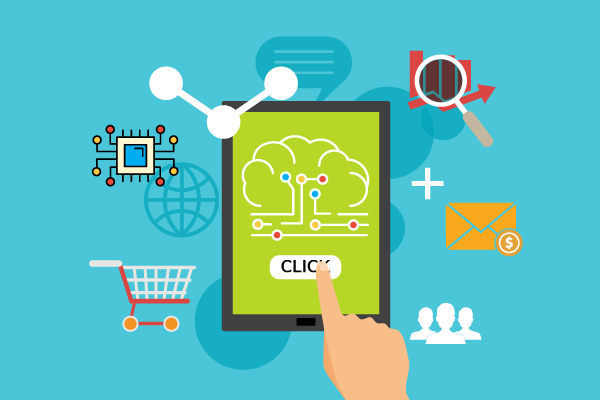In the digital landscape of today, consumers are bombarded with countless marketing messages daily. As attention spans dwindle and competition intensifies, businesses must find innovative ways to stand out. One of the most effective strategies to achieve this is personalization. Tailoring marketing efforts to individual preferences and behaviors is no longer just a nice-to-have; it’s essential for driving conversions. Here’s why personalization is key to enhancing your conversion rates.

1. Understanding Consumer Behavior
Personalization begins with a deep understanding of consumer behavior. By analyzing data on customer interactions, preferences, and past purchases, businesses can gain valuable insights into what drives their audience. This information allows brands to create targeted campaigns that resonate with specific segments of their audience.
Benefits:
- Improved Targeting: Brands can segment their audience based on behavior, allowing for more precise targeting.
- Increased Relevance: Personalized content is more relevant to the consumer, increasing the likelihood of engagement and conversion.
2. Enhancing Customer Experience
A personalized experience makes customers feel valued and understood. When brands cater to individual preferences, it enhances the overall customer experience, fostering loyalty and trust.
How to Enhance Customer Experience:
- Product Recommendations: Use algorithms to suggest products based on browsing history or previous purchases. For example, if a customer frequently purchases fitness gear, recommend related items such as supplements or workout apparel.
- Customized Content: Tailor email marketing campaigns to include content that aligns with a customer’s interests. Personalized subject lines and content can significantly increase open rates and engagement.
3. Increasing Engagement
Personalized marketing increases engagement levels across various platforms. When consumers receive content tailored to their interests, they are more likely to interact with it, whether through clicks, shares, or comments.
Engagement Strategies:
- Dynamic Content: Use dynamic content on your website and in emails to display relevant information based on user behavior. For instance, if a user frequently visits a category for home decor, highlight new arrivals in that category.
- Social Media Personalization: Personalize social media ads based on user interests and behaviors, enhancing the likelihood of engagement and conversion.
4. Boosting Conversion Rates
The ultimate goal of any marketing effort is to drive conversions. Personalization has been shown to significantly boost conversion rates. According to studies, personalized calls to action (CTAs) can improve conversion rates by up to 202%. When consumers see content that directly aligns with their needs and interests, they are more inclined to take action.
Tips for Boosting Conversion Rates:
- A/B Testing: Experiment with different personalized messages, offers, and CTAs to identify what resonates best with your audience.
- Urgency and Exclusivity: Create personalized offers that instill a sense of urgency or exclusivity, such as limited-time discounts for loyal customers.
5. Reducing Cart Abandonment
Cart abandonment is a significant challenge for e-commerce businesses. Personalization can help reduce this issue by reminding customers of the items they left behind and encouraging them to complete their purchase.
Cart Abandonment Strategies:
- Personalized Follow-Up Emails: Send follow-up emails to customers who abandon their carts, including personalized messages and product recommendations based on their browsing history.
- Incentives for Completion: Offer personalized discounts or free shipping to incentivize customers to complete their purchases.
6. Building Brand Loyalty
Personalization fosters a sense of connection between brands and consumers. When customers feel recognized and appreciated, they are more likely to remain loyal to a brand. Loyalty translates into repeat purchases and long-term customer relationships, significantly impacting overall revenue.
How to Build Brand Loyalty:
- Loyalty Programs: Create personalized loyalty programs that reward customers based on their purchasing behavior. Tailor rewards to their preferences to enhance their shopping experience.
- Exclusive Access: Provide personalized offers and exclusive access to new products or sales for returning customers.
7. Harnessing Data for Continuous Improvement
Personalization relies heavily on data. By continuously analyzing customer data, businesses can refine their personalization strategies, ensuring they remain effective over time.
Data-Driven Strategies:
- Customer Feedback: Collect and analyze customer feedback to understand what aspects of personalization resonate most with your audience.
- Behavioral Analytics: Monitor user behavior on your website to identify trends and adjust your personalization efforts accordingly.
Conclusion
In a world where consumers crave tailored experiences, personalization is no longer optional; it’s essential for driving conversions. By understanding consumer behavior, enhancing customer experience, increasing engagement, and building brand loyalty, businesses can leverage personalization to create meaningful connections with their audience. As competition continues to grow, prioritizing personalization will not only boost conversion rates but also foster long-term relationships with customers. Start implementing personalized strategies today and watch your conversions soar!


No responses yet